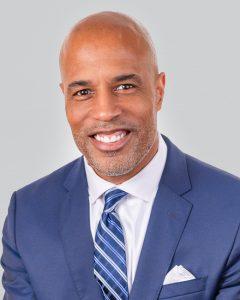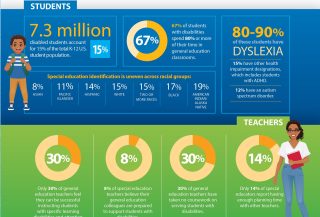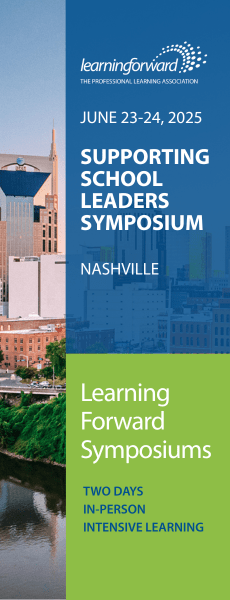CALL TO ACTION
Here’s my professional learning wish list for 2025
By Frederick Brown
Categories: Collaboration, Standards for Professional Learning, System leadershipDecember 2024
Many of us make wish lists around the holidays, a collection of requests and hopes that we’ve saved up during the year to share with family and friends. This year, I’m making a different kind of wish list — a set of steps to build a career-long professional learning continuum that begins with partnerships between K-12 districts and educator preparation programs. The wishes on this list can be fulfilled at any time, and their benefits continue for years to come.
''This year, I’m making a different kind of wish list—a set of steps to build a career-long professional learning continuum.” In #TheLearningPro, Frederick Brown writes about the power of reciprocal partnerships. Share on XTeach standards in preservice programs
First, I wish both teachers and leaders will graduate from preservice programs with a deep understanding of high-quality professional learning. It should come as no surprise that, for me, this means knowledge about the Standards for Professional Learning and opportunities to implement them.
I believe teachers deserve and need to have a clear sense of the content, processes, and conditions for effective professional learning so they will demand it once they begin their teaching careers. Too often, professional learning gets a bad reputation because of the unfortunate persistence of outdated, sit-and-get professional development that doesn’t connect to teachers’ needs and doesn’t lead to student success.
If preservice programs help teachers understand the power and potential of high-quality professional learning from their earliest days in the profession, they will seek it out, demand it from their leaders, and see low-quality sessions as a problem to be fixed, not as an example of the larger field of learning opportunities.
I also believe that aspiring leaders should understand how important it is for them to create the conditions in their schools and districts to help teachers and other leaders experience the kind of professional learning that research shows will lead to improved educator practice and results for students. As they embark on new roles, they need to know that professional learning is part of those roles, not a siloed activity that stands alone in the professional development department or human resources office.
Their leadership training programs can emphasize the importance of modeling high-quality professional learning through their continued engagement in their own ongoing learning and development as well as prioritizing professional learning time and resources for their staff members.
Implement standards in higher education
Second, I wish university faculty and staff will consider implementing the Standards for Professional Learning themselves as well as teaching them to candidates. In both my undergraduate and graduate education, I experienced teaching that transformed my practice, first as a teacher and then as a principal. Unfortunately, I also experienced instruction so lacking in inspiration and application that it led me to wonder if there were any minimum standards in place for higher education teaching.
Imagine a university program where all instructors understand the importance of and embody the practices of high-quality instruction. Of course, excellent instructors can be found in nearly all higher education programs. But if everyinstructor created an outstanding learning experience for future leaders, collaborated with colleagues to continually learn about and share best practices, and transparently discussed those processes with candidates, the ultimate impact on K-12 students would be enormous.
Although the Standards for Professional Learning were written with K-12 schools in mind, the underlying principles apply to all levels of education. I believe they could help create the culture of instructional excellence in higher education that every leader deserves.
Engage in reciprocal partnerships
Third, I wish districts and schools will engage in reciprocal partnerships where all parties learn from each other. The Wallace Foundation launched an initiative in 2016 that is a good example of such partnerships. In the initiative, seven universities in seven states worked with districts and other key partners to strengthen leader preparation programs and align them with district needs.
RAND conducted a study of the five-year initiative and noted several key findings (Wang et al., 2022):
When districts were involved in choosing candidates for the university programs and helping shape the learning experiences for those students, graduates were more likely to return to the partner district and be better prepared to serve the students in its schools.
Districts also learned about best practices from effective preservice programs, which resulted in stronger professional learning for principals back in the districts.
Many districts developed systems to track the learning and experiences of their principals, which they were able to use to strengthen professional learning and help with principal placement and leadership transitions.
This kind of shared learning is possible even without dedicated funding and a major national initiative. It starts with conversations between institutions and taking the time to develop a shared vision and goals. The next steps, including structures and data collection processes, can be informed by the examples and lessons from the Wallace initiative.
Build in support and accountability
Fourth, I wish states and other jurisdictions will support university preparation programs and hold them accountable for the learning experiences described above. Change is often helped along by a carrot-and-stick approach, where policies and authorizing agencies both incentivize and monitor the desired modifications of existing patterns.
In educator preparation, state agencies play key roles in accrediting programs and overseeing credentialing programs for candidates. By aligning expectations across the educator pipeline and incentivizing collaboration between universities, alternative certification programs, and districts, states can build a system that embeds ongoing professional learning from the beginning and throughout educators’ careers.
When I was a program officer at The Wallace Foundation, a state whose grant I managed was serious about holding leadership preparation programs accountable. After developing clear expectations about what was expected in those programs, the state decided to sunset all programs as part of the accreditation process. Every program had to reapply for accreditation and show evidence they were meeting the new standards (The Wallace Foundation, 2008).
This may sound like a drastic approach, but it is only one of many ways to be successful. During my time at the foundation, I saw other states take different approaches, including creating incentives and setting up monitoring processes. What matters is having intentional structures and processes to bring about the changes I’ve described above.
What’s on your wish list?
I believe my wish list is both idealistic and practical. We have research and anecdotal evidence that show these steps are doable and beneficial. What we need now is awareness of the importance of a seamless approach to educator development and a shared commitment to making it happen. We can’t get there by only preaching to the choir of our professional learning communities. Whatever our roles, we all need to reach out and build connections across institutions, levels, and systems.
At Learning Forward, we know this is an important component of improving teaching and learning, but not the only one. What does your professional learning wish list for 2025 and beyond look like? How can Learning Forward help fulfill it? Reach out to us and let us know so we can partner on the path to a reality where all educators’ — and most importantly all students’ — wishes for the future come true.
Download pdf here.
References
The Wallace Foundation. (2008). Becoming a leader: Preparing school principals for today’s schools.
Wang, E.L., Gates, S.M., & Herman, R. (2022). District partnerships with university principal preparation programs. RAND & The Wallace Foundation.

Frederick Brown is Learning Forward’s president | CEO. Fred is an education visionary who knows firsthand that our nation’s schools need transformational change if we are to meet the challenges of the next decades. Fred advocates that every child deserves to reach their highest potential and every educator must have the opportunity to participate in exemplary, ongoing, professional learning programs to provide students the skills needed to meet their unique needs.
Supporting educators at all levels and improving student achievement are through lines of Fred's career. An elementary school teacher, a middle school assistant principal, and school principal, Fred saw firsthand the impact high-leverage instructional practices and school culture have on school success.
Fred is a frequent speaker on leadership and building high-quality learning in schools. He has co-authored two books that have made significant contributions to the field of education, demonstrating how a comprehensive approach to professional learning can be achieved so that everyone in a system is a learner, and how principals apply a learning lens to their many critical responsibilities to create a productive climate for learning and collaboration. "Becoming a Learning System" and "The Learning Principal -- Becoming a Learning Leader" are time-tested Learning Forward resources for schools and leaders.
Categories: Collaboration, Standards for Professional Learning, System leadership
Recent Issues
BUILDING BRIDGES
December 2024
Students benefit when educators bridge the continuum of professional...
CURRICULUM-BASED PROFESSIONAL LEARNING
October 2024
High-quality curriculum requires skilled educators to put it into...
LEARNING TO PIVOT
August 2024
Sometimes new information and situations call for major change. This issue...
GLOBAL PERSPECTIVES
June 2024
What does professional learning look like around the world? This issue...












